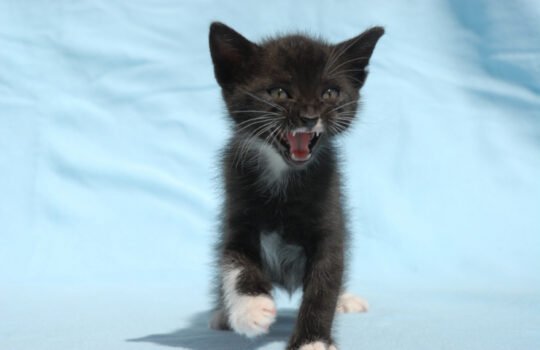Understanding Your Cat’s Behavior and Body Language

Cats are fascinating creatures, with unique personalities and behavior patterns. Understanding your cat's behavior and body language can help strengthen your bond and improve your relationship with your furry companion. In this blog post, we'll explore some common behaviors and body language cues that cats exhibit, and what they might mean.
First, it's important to understand that cats are independent animals. They don't rely on human companionship as much as dogs do, and they tend to keep to themselves. This means that it can be more difficult to read their behavior and body language, as they may not be as expressive as other pets. However, with a little knowledge and observation, you can start to understand what your cat is trying to communicate.
One common behavior that cats exhibit is rubbing their face and body against you. This is a sign of affection and trust. Cats have scent glands on their face and body, and when they rub against you, they are marking you with their scent. This is a way of claiming you as their own and expressing their love and affection for you.
Another behavior that cats exhibit is purring. Cats purr when they are happy and content, but they can also purr when they are stressed or in pain. It's important to pay attention to the context of the purring, as well as the cat's body language, to understand what the cat is trying to communicate. A cat that is purring while kneading a blanket, for example, is likely happy and content. A cat that is purring while hiding under the bed, on the other hand, may be stressed or in pain.
Cats also use their tails to communicate. A tail that is held high and fluffed out is a sign of aggression or excitement. A tail that is held low and flicking back and forth is a sign of uncertainty or agitation. A tail that is held still and tucked between the legs is a sign of fear or submission. It's important to pay attention to the tail, as well as the rest of the cat's body language, to understand what the cat is trying to communicate.
Cats also use their ears to communicate. Ears that are perked up and forward are a sign of interest or attention. Ears that are flattened back against the head are a sign of aggression or fear. Ears that are twitching or flicking back and forth are a sign of uncertainty or agitation. It's important to pay attention to the ears, as well as the rest of the cat's body language, to understand what the cat is trying to communicate.
Cats also use their eyes to communicate. A cat that is staring intently at something is likely focused and interested. A cat that is wide-eyed and staring is likely surprised or scared. A cat that is squinting or half-closing its eyes is likely relaxed and content. It's important to pay attention to the eyes, as well as the rest of the cat's body language, to understand what the cat is trying to communicate.
In addition to these behaviors, cats also use their body language to communicate. A cat that is crouched down low to the ground with its tail tucked under its body is likely feeling threatened or scared. A cat that is standing tall with its tail held high is likely feeling confident and assertive. A cat that is arching its back and puffing out its fur is likely feeling threatened or aggressive. It's important to pay attention to the cat's overall body language, as well as individual behaviors, to understand what the cat is trying to communicate.
In conclusion, understanding your cat's behavior and body language can help strengthen your bond and improve your relationship with your furry companion. Pay attention to your cat's behaviors,






If you have a cat this is a must have
Perfect size and great for the raised tilted bowl eaters
love the color looks just like the picture
high quality and looks great in my home
this is how undestrutible it is. Very disappointing